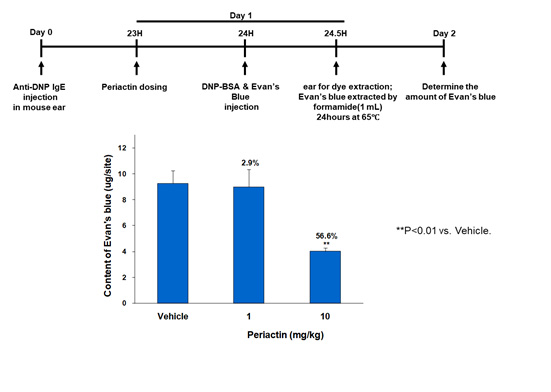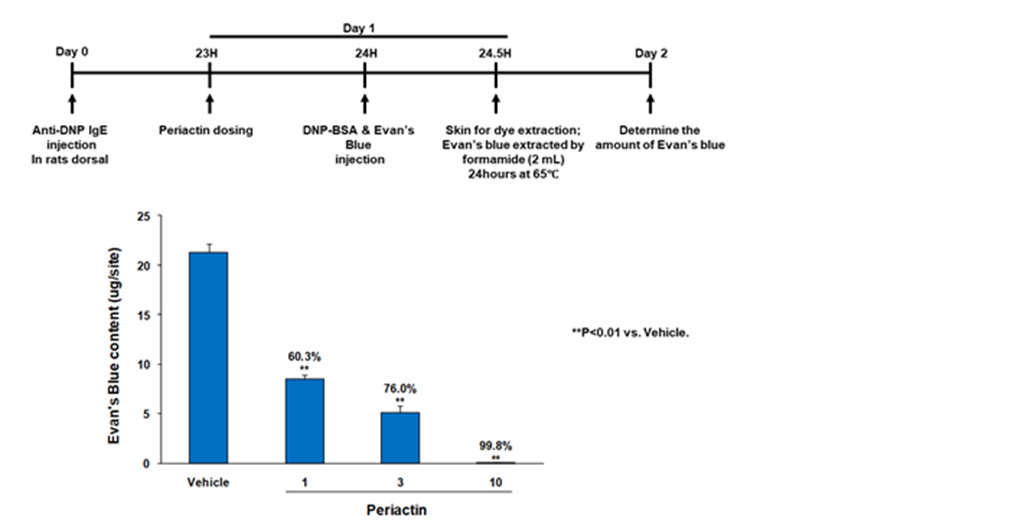


Passive cutaneous anaphylaxis, also known as PCA reaction. It is a method to test the high sensitivity of antibodies or antigens by local allergic reactions caused by antibodies that bind to homogeneous or xenogeneic animal tissues. The Prau-nitz-Kuestner reaction is an example of a PCA reaction that is tested in normal human skin using human antibodies, but in most cases it is by injecting other animal or human serum into the skin of a guinea pig. PCA is usually performed by injecting serum into the skin of guinea pigs. After 3-5 hours, the binding antibodies bind to the mast cells of the tissues, while other antibodies diffuse. The antigen reacts with antibodies attached to mast cells at the site of the antiserum injection, and histamine or other drug factors dissociate to produce local allergic reactions.
Aim: To validate passive cutaneous anaphylaxis model in male BALB/c mice.
Animal: BALB/c mice
Reagent: Anti-DNP IgE, Albumin dinitrophenyl (DNP-BSA), Evan's Blue, Periactin

Aim: To validate passive cutaneous anaphylaxis model in male Wistar rats.
Animal: Wistar rats
Reagent: Anti-DNP IgE, Albumin dinitrophenyl (DNP-BSA), Evan's Blue, Periactin
